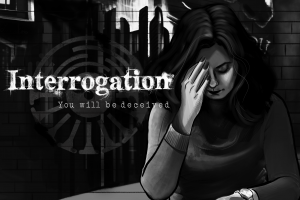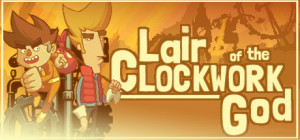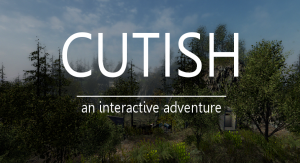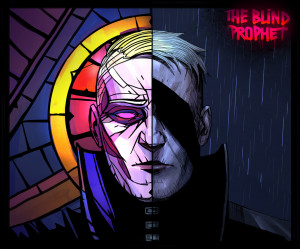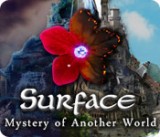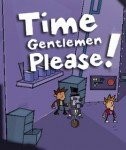Review for Shapik: The Moon Quest

With his atmospheric point-and-click puzzler Shapik: The Moon Quest (as well as its spiritual 2013 freeware predecessor Shapik: The Quest), indie developer Paul Podberezko has taken more than a few pages out of Amanita’s design handbook while achieving a distinct look and style all his own. The game features the same kind of dialogue-free storytelling approach that titles like Samorost have perfected, along with gorgeous graphics, a beautiful soundtrack, and intuitive puzzles that are extremely entertaining to figure out. A short runtime, coupled with the self-imposed limitation of being devoid of any verbal communication, does undercut its potential world-building just a tad, but in general this bigger, better (unrelated) sequel marks a promising first commercial entry in the series.
There is a story to be found within The Moon Quest, though it is a little telling that I learned more from reading the game’s marketing synopsis than I was able to glean by actually playing. The major points are presented via an introductory cinematic and, more often than not, pictogram speech bubbles throughout: at some point in the distant past, a nuclear catastrophe devastated the planet, and mankind’s survivors were forced to flee to the nearby moon. Our protagonist, who appears to be a young boy with an odd complexion (implied to be the one of the last products of a scientific cloning experiment) emerges from his stasis pod many years later and is tasked with making his way through the moon base to return to Earth and find a human-plant hybrid creature slumbering in a similar pod.
It’s not much to go on in terms of world-building or narrative, but it’s enough to see the game through to its conclusion. Things like character motivation aren’t illuminated further, though some basic guesswork will suffice to fill in the gaps that being sent on a desperate rescue mission is probably important to Earth’s restoration in some way. So with the overarching premise suitably squared away, it’s really just some of the finer details that would have benefitted from more development: who are the villains trying to beat you to your goal, and why do they not want the planet saved? What happened to the others who were presumably sent out to accomplish this task before you? Who or what is the creature you’re seeking, what happened to her, and why is she the key to bringing the planet back from the brink?
Even with such narrative omissions, The Moon Quest manages to be quite an entertaining experience, as the joy of discovering these gorgeous hand-painted worlds and how to advance through them deftly takes your mind off of any short-changed plot details. Locations and circumstances are diverse, whether encountering a village of peaceful survivors trying to eke out an existence in the wilds, coming across a cozy fairy-tale cottage nestled in among the dense foliage of a tree crown, or carefully picking your way through a laboratory complex staffed with saw-blade-wielding robots ready to stop you from advancing.
Interaction with the environment is as simple as pointing and clicking, with the cursor usually defaulting to a walk icon that moves the character around the screen. Items that can be manipulated are similarly indicated by the cursor changing, but only once the player character is within reach, meaning that a visual scan of an area alone doesn’t reveal all points of interest. There is a small inventory, but acquired objects are used automatically when clicking their corresponding hotspots. You progress through the game in a linear fashion, leaving each self-contained area once its puzzles have been solved, except for one instance where I left a place that seemed to still have things to do, and then doubled back through a few locations by design late in the game. Even the world layout is cozy, with each scene comprised of no more than a couple of screens that can be transitioned between quickly.
The vast majority of the game’s twenty-two scenes feature one or more obstacles that you’ll need to figure out how to overcome. Occasionally this means having to intuit the operation of a piece of unknown tech, while other times it’s devising a creative way to get yourself or a companion past a roadblock. An early example of the latter is helping a friendly cargo bot that accompanies you for a while past a burst pipe spewing water all over the place. These impediments offer a lot of variety – one scene may require evading a large mutated monster, another sees you collecting herbs to brew a pot of tea just the right way. There’s no penalty for failing to find the right solution immediately; even moments that have you facing mortal danger give you unlimited time and retries to divine a way past.
Both the organic puzzles and the more traditional kind, usually presented in conjunction with a piece of still-functional technology, provide just the right amount of challenge to be enjoyable; fair but not frustrating, allowing the game to be completed in under two hours. (A comic book-style hint system is included for those who want it, with a built-in cooldown timer that keeps it from being used indiscriminately, though even the hints are exclusively pictograms, so some won’t be as helpful in a pinch as you may like.)
You’ll have access to any completed area from the main menu, but there’s not much reason to revisit them, outside of a handful of hidden collectibles that unlock a gallery of concept art. A couple of Easter eggs from the preceding freeware entry are scattered here and there, largely things like familiar creatures popping up from time to time, although no deeper connection between the two games is really hinted at.
As beautiful as the backgrounds are to look at, the detailed character animations are equally vital in making us care about our heroes, whether through cute little moments of irreverence like the protagonist goofing off by trampolining on a featherbed, or more emotionally impactful gestures like the tearful wave he offers when separated from his robot pal. An interesting facet of Shapik’s visual design is its use of negative space. While some scenes are large, screen-filling environments full of vivid color and interesting details, others are laid out in a quasi-comic-panel style. One early area is blacked out except for a hallway stretching from left to right across the lower half of the screen, with two doors in the middle of the back wall leading to a pair of small rooms that fade in as panels in the top-left and top-right screen corners when entered. Other scenes do this, too, where inserts and panel displays are not necessarily geographically accurate but stylish in appearance nonetheless.
The charm already established by the art and engaging sense of exploration is heightened by an incredibly fitting instrumental soundtrack, which switches back and forth between pretty compositions and background pieces of exploratory ambiance. Several ephemeral numbers serve to underscore the fantastical imagination inherent in these worlds as well as help us to relate to the characters on a more emotional level. We may not know all the technical ins and outs of what’s happening here, but we understand in our guts the desperate quest we’re on, we celebrate the comedic and sweet moments between characters, and even suffer the pangs of dramatic loss along the way. Though the game features nonverbal communication cues, the characters do use a cute made-up language of random sounds with each other, which helps endear them to us even more.
It’s hard to sell Shapik: The Moon Quest on the strength of its narrative – it’s far from intricate or wholly unique. But it’s not the story you’ll remember after your (somewhat short) play time is over; rather, you’ll have made some lasting connections with the game’s protagonist and his occasional companions that tag along on his adventure to help save the planet. Everything from the art style to the mesmerizing soundtrack help make the quest memorable, not to mention the entertaining puzzles with just the right degree of challenge you’ll get to solve along the way. Though its luster is relatively brief, this is a lovely little gem that will shine on in your memory long after the fact.








